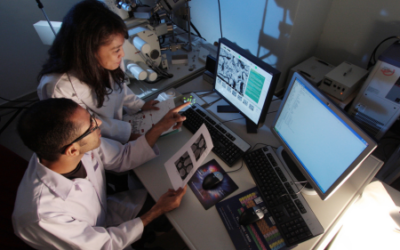It sounds a bit futuristic – transportation systems that direct people and resources based on artificial intelligence. Is that really a possibility? Actually, it’s happening now – in real time!
When smart transportation technology first became part of the ever-changing transportation landscape, it was used primarily for traffic management. Now, smart transportation technology is used for much more, and when it incorporates artificial intelligence, the capabilities are astounding.
As smart transportation technology evolved, intelligent transportation systems (ITS) expanded and projects relying on real time data and predictive capabilities were enhanced with artificial intelligence. That resulted in projects that go far beyond the initial technology solutions.
And, as ITS programs expand, so do the opportunities. A recent market survey predicts that over the next decade, ITS will move aggressively into autonomous vehicles, intermodal freight management, roadway weather monitoring, collision notification and public transit scheduling. It will obviously continue to enhance automated traffic management systems. Experts predict that the global ITS market in 2017 will reach $21.75 billion and $143 billion by 2020.

The contract calls for the installation of just under 100 dynamic message signs, more than 100 closed circuit TV (CCTV) cameras, nearly 150 solar-powered radar detection devices and about 500 traffic signal detection sites. The system will provide valuable data for traffic engineers but, even more importantly, it will allow emergency personnel to respond to incidents much quicker and more efficiently.
In Seattle, residents depend on the city’s ITS program to let them know, in real time, where accidents have occurred or highway incidents may cause traffic delays. The city’s program also synchronizes data and predicts drive times based on traffic volume, construction project areas, etc.
As ITS programs become even more high-tech, officials will be able to provide predictive capabilities of all types. Artificial intelligence synthesizes data to reveal patterns that are used to predict future highway incidents, collisions and traffic congestion. Imagine – computers predicting a motor vehicle accident before it occurs. Really?
One company recently entered into a pilot program with the city of Las Vegas. City, state and county agencies that traditionally relied on inbound calls to report traffic accidents will test notification capabilities of artificial intelligence software as a part of the pilot project. The program’s software will also analyze data such as traffic flow and weather conditions to predict accidents in certain areas. Then, public safety groups will allocate resources to the problematic areas where accidents are predicted. Two major cities in Florida are also considering very similar pilot programs.
Smart transportation technology and artificial intelligence, when linked, offer hope to government officials who are grappling with huge transportation challenges. The problems are great and the potential is tempting so public officials, at this moment at least, appear eager to hear from firms with intelligent transportation solutions.
Since 1995, SPI’s procurement consulting services have helped companies of all sizes effectively navigate the various jurisdictions of government procurement. Contact them today to learn how they can help grow your business.






